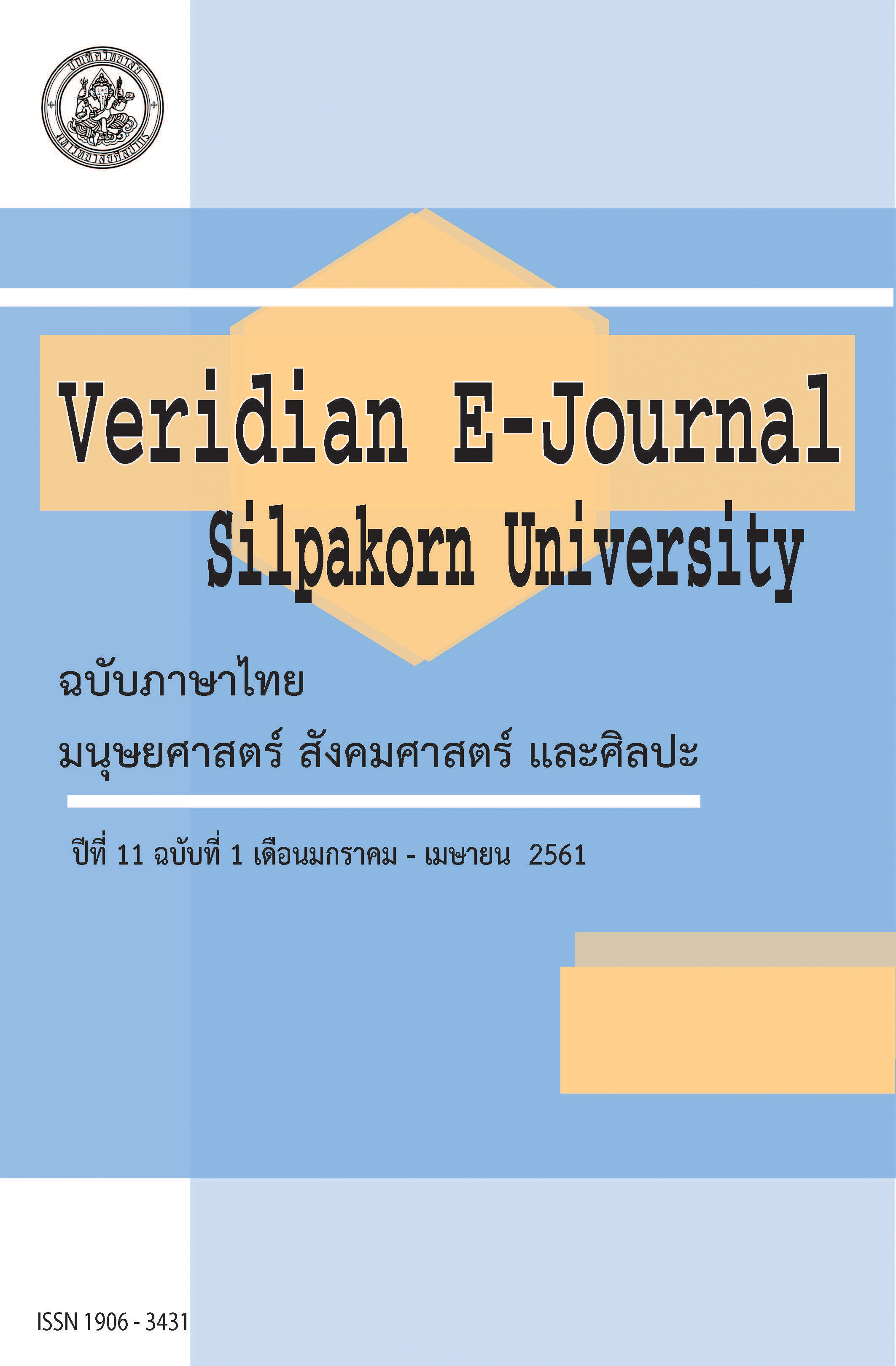ปัจจัยสภาพภูมิอากาศที่สัมพันธ์กับพฤติกรรมเสี่ยงเปิดรับโรคมาลาเรีย กรณีศึกษา ตำบลผาบ่อง อำเภอเมือง จังหวัดแม่ฮ่องสอน (Relation of Climate Factors and Risk of the Malaria’s Exposure Behaviors: A case study of Pha Bong Sub-) Relation of Climate Factors and Risk of the Malaria’s Exposure Behaviors: A case study of Pha Bong Sub-district, Mueang District, Mae Hong Son Province
Main Article Content
บทคัดย่อ
งานวิจัยนี้ศึกษาเกี่ยวกับปัจจัยสภาพภูมิอากาศที่สัมพันธ์กับพฤติกรรมเสี่ยงเปิดรับโรคมาลาเรีย โดยวิเคราะห์จากพฤติกรรมการใช้พื้นที่นอกบ้านช่วงเวลา 18.00-06.00 น. เนื่องจากช่วงเวลาดังกล่าวยุงก้นปล่องพาหะนำโรคมาลาเรียมักเข้ากัดกินเลือดคนมากที่สุดอ้างอิงจาก Roper et al. (2000) พฤติกรรมการใช้พื้นที่นอกบ้านที่สนใจวิเคราะห์ ได้แก่ การประกอบอาชีพ การเข้าป่า และกิจกรรมนันทนาการนอกบ้าน ประชากรกลุ่มตัวอย่าง คือ ผู้ป่วยมาลาเรียในตำบลผาบ่องช่วง พ.ศ. 2547-2556 จำนวน 58 ราย และเครื่องมือที่ใช้ในการศึกษาเป็นแบบสอบถาม เก็บรวบรวมข้อมูลจากการสัมภาษณ์ และวิเคราะห์ข้อมูลด้วยวิธีทางสถิติ ส่วนปัจจัยทางสภาพภูมิอากาศที่นำมาวิเคราะห์ ได้แก่ ปริมาณน้ำฝน จำนวนวันที่ฝนตก อุณหภูมิ ความชื้น ความเร็วลม ผลการศึกษาพบว่า อุณหภูมิและจำนวนวันที่ฝนตกเป็นปัจจัยหลักที่ส่งผลกระทบต่อการเปลี่ยนแปลงพฤติกรรมการใช้พื้นที่นอกบ้าน เมื่ออุณหภูมิสูงขึ้นและฝนไม่ตกประชาชนมีแนวโน้มใช้พื้นที่นอกบ้านบ่อยขึ้นและปรับช่วงเวลาการใช้พื้นที่นอกบ้านยาวนานขึ้น ดังนั้นการเปลี่ยนแปลงสภาพภูมิอากาศในช่วงฤดูกาลแพร่ระบาดมาลาเรีย พ.ศ. 2547-2556 ของตำบลผาบ่อง พบว่า อุณหภูมิเพิ่มขึ้นและจำนวนวันที่ฝนตกลดลง ส่งผลให้ประชาชนปรับเปลี่ยนพฤติกรรมการใช้พื้นที่นอกบ้านและเสี่ยงต่อการเปิดรับโรคมาลาเรียมากขึ้น โดยเฉพาะกลุ่มผู้เข้าร่วมกิจกรรมภาคการเกษตร กิจกรรมเข้าป่า กิจกรรมพบปะสังสรรค์ และกิจกรรมเพื่อชุมชน
This study investigated the related of climate factors and risk of malaria’s exposure behaviors, analyzed from the outdoor behaviors during the hours between 6.00pm-06.00am. This at the time was the Anopheles mosquitoes often bit human blood, from literature Roper et al. (2000). Analyzed behaviors consist of occupation, jungle, and outdoor recreations. The sample population in this study was 58 malaria patients in Pha Bong Sub-district during 2004-2013. The tools used in the study were questionnaires that collected data from the interviews and then analyzed the data using the statistical method. The analyzed climate factors were precipitation, number of rainy days, temperature, humidity, and wind speed. The study found that temperature and number of rainy days were the main factors that affected the behavior of outdoor living. The warming temperature and no rain, people are more likely to use outdoor areas and longer periods of use. Therefore, climate change in malaria season during 2004-2013 in Pha Bong found that temperature increases with a number of rainy days decreasing, which affected to outdoor behavioral and risks to malaria exposure especially people into among the agricultural activities, jungle, social meeting and community events.

